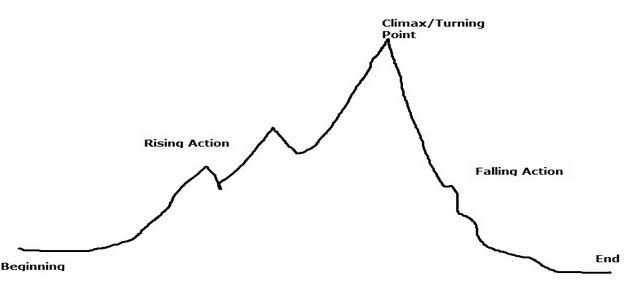Wanna know what’s better than delivering good news to a client? Squeezing every last drop of impact out of that delivery.
Easier said than done, right? Well, not really.
The secret is context. And you present this context by showing instead of telling.
So what does this mean exactly? Show not tell is the mantra of good storytelling. And indeed, instead of telling you what it means, I’ll show you.
TO SHOW:
The woman’s knees creaked as she knelt to pick up her cane.
TO TELL:
The woman was old.
The difference is obvious. And yes, this is an example using prose, not a presentation. You’re probably wondering why this is important…or even relevant. We’re PPC professionals, after all, not storytellers. (Or are we?…more to come…)
One of the most ubiquitous publications in the field of psychology is George A. Miller’s The Magical Number Seven, Plus or Minus Two: Some Limits on Our Capacity for Processing Information. Miller’s hypothesis, upon which he expounds in great detail, is that at any given moment, the human mind is capable of holding between 5 to 9 separate pieces of information.
Whether or not Miller’s suppositions are concrete is of little bearing. What matters is that the human capacity for memory is actually very limited.
Unless we present our information as a story.
Check this out— storytelling accesses a different part of our brains than the one that receives lists, which is how business information is usually reported. When receiving stories, our brain utilizes both emotion and memory in order to retain information…which is to say we are more efficient at hanging on to information that we receive this way.
If you’ve ever occupied one of the rigid slabs of wood that high-school English teachers call “desks”, you’ve probably seen one of these:
Little did you know that Mrs. Beatrice Dillsnorker’s formative prattlings would make a reappearance years down the line in your professional line of work!
Every day, every week, every month of performance of any PPC account is it’s own unique story, and that story can always be presented in a format that aligns with the above graphic.
It’s tempting to just jump to the climax. Assuming the information you have to give the client is good news, this is where you anticipate their positive reaction. But there’s something to be said for the build. This is where the context is established.
I’ll use some examples to really show you what I’m talking about.
This, Darth Vader’s proclamation of fatherhood…
…would have very little impact without the context of all his evil in the 3.5 hours of screen time leading up to this moment.
And this, the heart-wrenching culmination of one of the most memorable romances of a generation…
…would just be a glimpse at an elderly couple’s afternoon nap if not for the viewer’s knowledge of the trials they suffered to get to that point.
If you find yourself skeptical that storytelling techniques plucked from popular media could possibly be of use in a data-driven, starched-collar environment, rest assured that stories are everywhere.
Your timestamped e-mail inbox tells the story of your day. Your calendar tells the story of your month. And these are boring. Why? Because they tell instead of showing.
The reality is, as a PPC account manager, you are equipped to be a high-impact storyteller. You’ve got a story— the performance of an account— and you have exactly what every storyteller most wants: a captive audience. If you don’t think your client is emotionally (to say nothing of finances…) invested in the story of their own adspend, you’ve got another thing comin’.
Check out this example from our own library of success stories:
Below is a snapshot of one of our accounts’ performance through the first three months of 2014.
The client sought increases in conversion volume, and decreases in CPA. So a few members of our team designed a strategy and implemented it.
This snapshot (blurred to protect the client’s confidentiality) evinces their initial account structure— 3 campaigns, all under the same label.
And here’s the result of our changes. Though it’s blurred, the difference is plenty evident— the account is more granularly segmented than before. The difference in campaign volume, as well as the heightened variety of labels speak to this.
Now, so far in this story we have the before, or the beginning, in the original performance metrics. We have the middle in the transition between account structures. The end of this particular PPC story is told with the results of our optimizations.
But we want to make sure this information arrives with righteous impact. Presented to the client as above— with a beginning, a middle, and an end— should do the trick. But why not take one extra measure? Provide a summary, something that tells the story all again, in one fell swoop.
So don’t sell yourself short. Make sure your information arrives with the gravity it deserves. Paint the picture of why the information you’re going to deliver— the climax— matters. Build to it, then unveil it, a veritable dropping of the curtain!
Showing instead of telling can be the difference between comprehension and confusion in your client. Comprehension in your client can be the difference in understanding the impact you, the PPC account manager, are making. Be appreciated. Show, don’t tell.
(featured image by Michael Shaheen)














